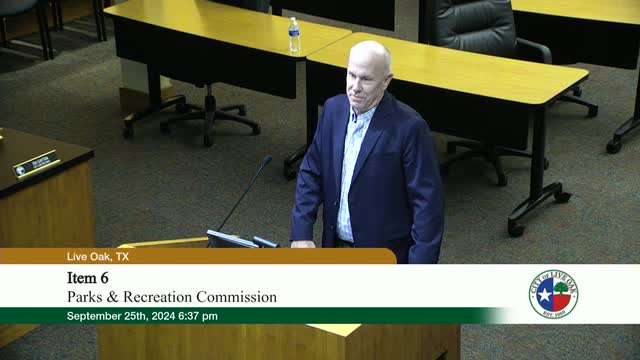Communities clash over e-bike regulations on trails
September 25, 2024 | Live Oak, Bexar County, Texas
This article was created by AI summarizing key points discussed. AI makes mistakes, so for full details and context, please refer to the video of the full meeting. Please report any errors so we can fix them. Report an error »

During a recent government meeting, officials discussed the challenges posed by the increasing popularity of electric bicycles (e-bikes) on local trails, particularly in state parks and natural areas. While enforcement of regulations regarding e-bikes is currently lacking due to resource constraints, some communities are proactively placing signage to restrict their use on unpaved trails, citing concerns over trail damage caused by the high speeds of e-bikes.
The conversation highlighted the importance of trail design in accommodating both pedestrians and cyclists. Officials noted that wider trails—ideally a minimum of 10 feet—can facilitate safer passage for all users. In contrast, narrower trails, such as those measuring 6 feet, may become problematic, especially for regular bicycles.
The discussion also touched on the trail system surrounding a local lake and dam, which presents unique challenges. The authority overseeing the dam has expressed a preference against any new pavement to avoid compromising the structure. Currently, a chip and seal coating is used for maintenance, but officials acknowledged the limitations imposed by these restrictions.
In response to inquiries about the accuracy of community feedback and project analyses, officials confirmed that their assessments are primarily based on resident surveys and staff input. While they have not extensively followed up with other cities regarding past projects, feedback has generally been positive, with communities expressing a desire for earlier implementation of certain initiatives.
Overall, the meeting underscored the need for careful planning and community engagement in developing trail systems that meet the diverse needs of users while preserving the integrity of natural spaces.
The conversation highlighted the importance of trail design in accommodating both pedestrians and cyclists. Officials noted that wider trails—ideally a minimum of 10 feet—can facilitate safer passage for all users. In contrast, narrower trails, such as those measuring 6 feet, may become problematic, especially for regular bicycles.
The discussion also touched on the trail system surrounding a local lake and dam, which presents unique challenges. The authority overseeing the dam has expressed a preference against any new pavement to avoid compromising the structure. Currently, a chip and seal coating is used for maintenance, but officials acknowledged the limitations imposed by these restrictions.
In response to inquiries about the accuracy of community feedback and project analyses, officials confirmed that their assessments are primarily based on resident surveys and staff input. While they have not extensively followed up with other cities regarding past projects, feedback has generally been positive, with communities expressing a desire for earlier implementation of certain initiatives.
Overall, the meeting underscored the need for careful planning and community engagement in developing trail systems that meet the diverse needs of users while preserving the integrity of natural spaces.
View full meeting
This article is based on a recent meeting—watch the full video and explore the complete transcript for deeper insights into the discussion.
View full meeting
